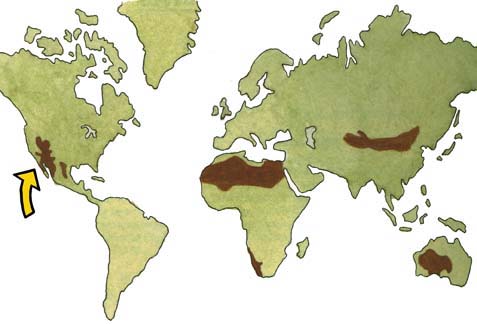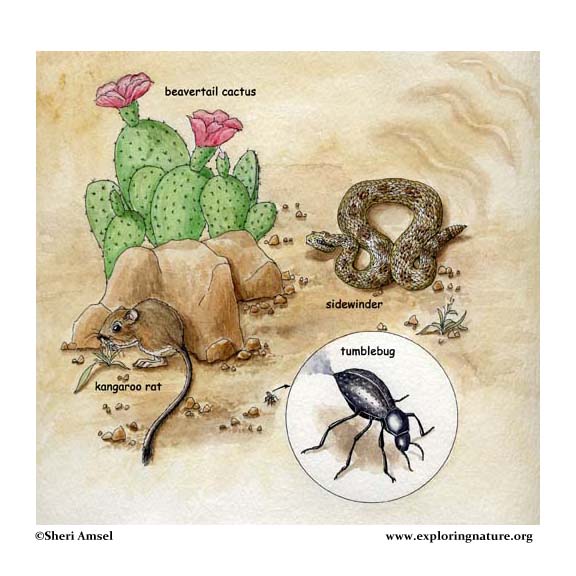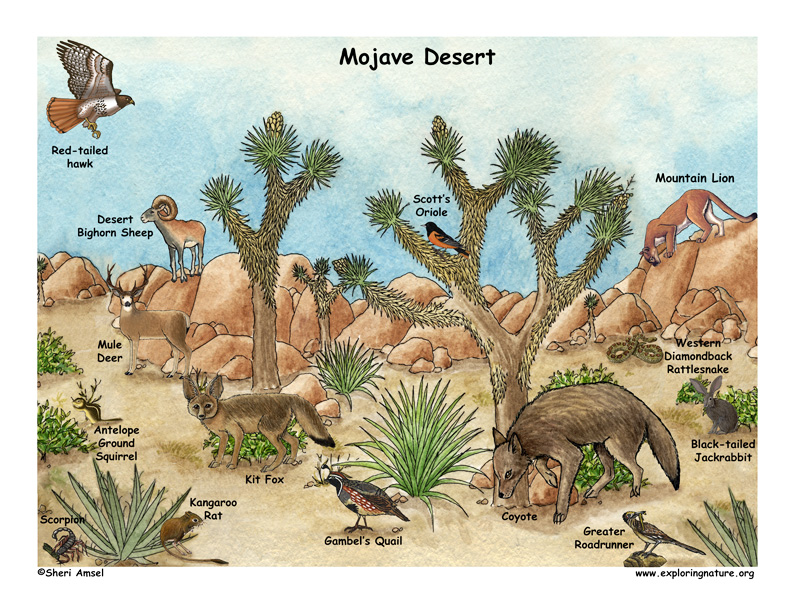

Death Valley cuts through the Mojave Desert below sea level.
Death Valley is one of the hottest places on earth. In the dry basin you will find strange landforms and drifting sand dunes.
Many animals manage to do well in the dry landscape. The desert jackrabbit eats such plants, like the juicy cactus, carefully avoiding the sharp spines. Its long ears pick up the slightest sound of danger. They also help cool off the jackrabbit's furry body by allowing extra body heat to escape through its many tiny blood vessels. The tiny kit fox also cools off through its huge ears. Its sharp hearing helps as it hunts for insects, rodents, and other small animals. The oldest animal on the desert may be the desert tortoise. They were collected so much for their shells, meat, or to sell as pets that they became endangered and are not legally protected. They roam the dry land eating the tough shrubs, grasses, and cacti. A damp hole in a saguaro cactus helps a family of elf owls keep cool. At night, these birds will fly out in search of insects to eat. On the ground, a Gambel’s quail searches for seeds and insects. In the sky, a turkey vulture makes large, slow circles in its constant search for carrion. Skidding across the sand, a deadly sidewinder snake leaves a strange warning trail. A kangaroo rat springs away from its path to find a safe hiding place. Disturbed by a predator, a tumblebug lifts its back to spray in case of danger. Animals in the desert use all kinds of strange adaptations to survive.
Plants included prickly pear, yucca, beavertail cactus, tough shrubs, and grasses.
When you research information you must cite the reference. Citing for websites is different from citing from books, magazines and periodicals. The style of citing shown here is from the MLA Style Citations (Modern Language Association).
When citing a WEBSITE the general format is as follows.
Author Last Name, First Name(s). "Title: Subtitle of Part of Web Page, if appropriate." Title: Subtitle: Section of Page if appropriate. Sponsoring/Publishing Agency, If Given. Additional significant descriptive information. Date of Electronic Publication or other Date, such as Last Updated. Day Month Year of access < URL >.
Amsel, Sheri. "Death Valley and the Mojave Desert" Exploring Nature Educational Resource ©2005-2024. December 13, 2024
< http://www.exploringnature.org/db/view/Death-Valley-and-the-Mojave-Desert >


